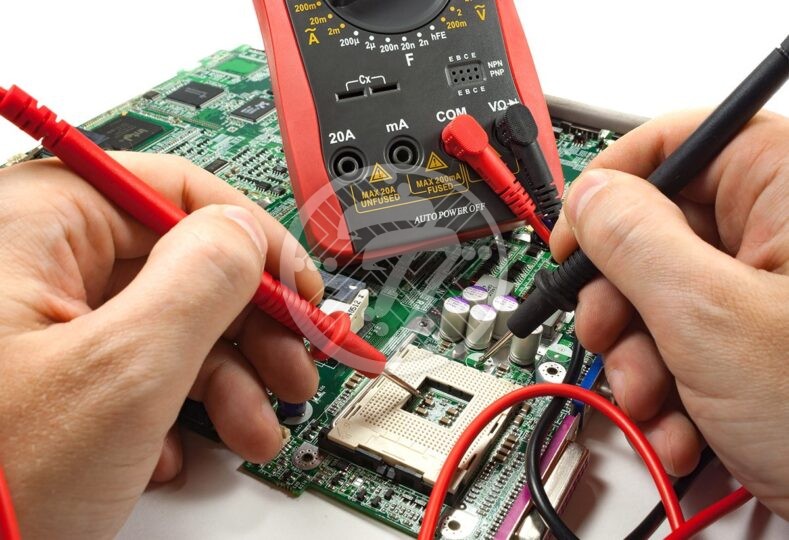10 Simple Ways To Speed Up & Optimize PCB Troubleshooting

Due to the ceaseless modernization in technology trends, PCB assembly is more complex and intricate in present times than ever before. With this, the PCB troubleshooting is becoming one of the monumental pursuits that accounts for specific expertise, technology and R&D. Fortunately, there is no need to fluster or ruffle as there exist some simple ways for PCB troubleshooting that can help speed up to detect, verify and test the troublesome components and features in a damaged Printed Circuit Board. The below content will drive you to the simple hacks, yielding techniques and easy ways to optimize and speed up the PCB troubleshooting.
It turns out to be more challenging when troubleshooting a multilayer PCB that is well complimented with scrupulous factors like signal analysis, size, types of components and number of layers. Some complex PCB’s require particular mechanized equipment for PCB troubleshooting, while in many cases, the PCB rework and repair is executed with basic electronic instrument for smooth mechanism of current, signal and traces through the circuitry.
Some common tools for PCB troubleshooting majorly used by PCB manufacturer includes Multi-meter, LCR meter, Logic & power supply analyzer and Oscilloscope that have specific foundation to deal with the complexities and need to probe into the roots of operational behaviour of the affected circuitry. Let’s roll up our sleeves and move on to further readings on ways to simplify troubleshooting the defective single layer PCB, Radio frequency PCB, digital/analogue mixed PCB, rigid flex PCBs and many more.
Top ways to speed Up & optimize PCB Troubleshooting are as below:
-
Magnified and thorough Visual Inspection technique
– The simple method to identify and locate the PCB damages is tracked and controlled through a This method helps to detect the traces that are overlapped, high sign for overheating, cracked up or damaged components and lacking components on the PCB. In many cases, few burnt or bulging components can be immediately found through magnified Visual Inspection technique.
-
Discrete Component Inspection
– is one of the concentrated methods for PCB troubleshooting that helps to sharply test each and every component individually. This type of testing is performed with the help of varied tools. With using LCR meter or a Multimeter, one can test the piece by piece values of transistor, capacitor, resistor, inductor, LED and other active components. The component is stated well that possess equal to or less that standard component value. On the other hand, either the solder joint is detected faulty or the component is stated bad if the component value is indicated as higher than that of standard component value.
-
Nodal Analysis
– Another option that allows a unique comparison between measure of current and voltage by applying power to every component individually is.
-
Physical Inspection
– A step ahead to a visual inspection technique, is conducted with the power exerted on a circuit. Without using the Thermo Graphic Camera that proves to be pretty expensive, hot spots are detected with the technique to touch the surface of a printed circuit board along with the components on the circuit board. The detected hot component is then cooled with the help of compressed canned air to lower the temperature in order to test the circuit mechanism.
No doubt about Physical Inspection to be one of the easy and effective way to optimize the PCB troubleshooting, but at the same time it is also considered a dangerous method that needs a lot of precautions to be taken. This method should only be applied on the lower voltage circuit boards. On the other hand, touching powered circuitry and varied components on the PCB, brings variation in the impedance of the circuit in turn changing the system behaviour. Due to such alterations, it becomes effortless to locate the affected circuit that calls for the additional capacitance to operate smoothly. -
Integrated Circuit Analysis
– Another simple method to optimize PCB troubleshooting includes. Some IC’s are identified by analysis through Logic analyzer or Oscilloscopes while many IC’s are simply detected by their markings. What make it more and more challenging are the special types of IC’s in varied configurations in addition to the complex PCB Layout. Herein, one of the simple ways to deal with damaged PCB is to compare the behaviour of the affected circuit with that of good circuit to track the anomalous behaviour on the circuitry.
-
Analogue Signature Analysis
– When PCB documentation or its component signature has been lost, is one of the effective techniques of PCB troubleshooting to test the unpowered, dead or faulty PCB’s.
Other ways to speed up and optimize the PCB Troubleshooting
- Functionality Testing
- Using a PCB troubleshooting software
- Checking of solder joints
Lastly, some more simple hacks to effectively diagnose the faults in PCB:
By alternating the voltage, one can test the unknown high pin count. Also use required devices like Multimeter to get all the signatures, inductance of each component and voltage resistance current in order to compute and compare it with the signatures of defective PCB.
Technotronix is an experienced professional to proffer optimized PCB troubleshooting, PCB rework and PCB repair services. With having a wide customer base from different industries, has made it possible to tune up, modify and alter the defective, dead and out of order PCB’s. At the prima facie, we initiate the PCB troubleshooting project with a smart plan for all the issues to be focused on. Some of these include time taken, material cost, type of inspection required and the need for a Pb-free PCB solder. After the parameters are identified for PCB troubleshooting, Technotronix takes a next step towards a well-defined PCB rework process using upgraded technology. Check out PCB Assembly rework to track down more details on our PCB troubleshooting services. To get your ‘out of order’ PCB’s repaired or reworked, feel free to drop a mail or start a talk with our PCB experts!






